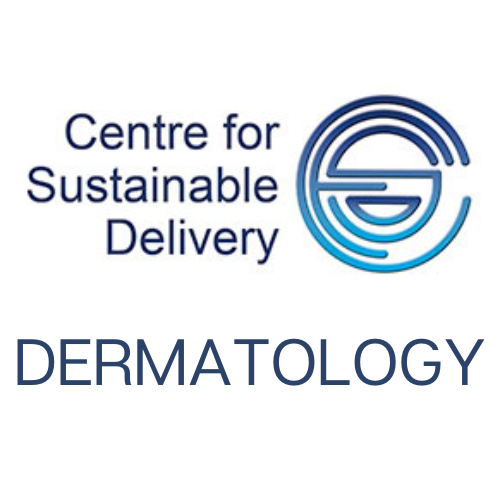Mild: ... Slight but definite erythema (pink), slight but definite induration/papulation, and/or slight but definite lichenification. No oozing or crusting. Disease limited in extent.
- Advise patient on the avoidance of irritants (e.g. soap).
- Prescribe generous amounts of emollients; advise frequent and liberal use.
- Moderate potency topical corticosteroids eg. betamethasone valerate 0.025% or clobetasone butyrate 0.05%
Moderate: … Clearly perceptible erythema (dull red), clearly perceptible induration/papulation, and/or clearly perceptible lichenification. Oozing and crusting may be present. Disease fairly widespread in extent.
- Advise patient on the avoidance of irritants (e.g. soap).
- Prescribe generous amounts of emollients; advise frequent and liberal use.
- Potent topical corticosteroids eg. betamethasone valerate 0.1% or mometasone 0.1%. If no improvement, may require the use of clobetasol propionate 0.05% (super potent) daily for up to 2 weeks, then review (trunk and limbs, not face and flexures).
- Sedating antihistamine at night if sleep disturbed and non-sedating antihistamine for daytime itch if required.
- Treatment of secondary infection: antibiotic as appropriate according to swab result.
Severe: … Marked erythema (deep or bright red), marked induration/papulation, and/or marked lichenification. Oozing or crusting may be present. Disease is widespread in extent.
- Advise patient on the avoidance of irritants (e.g. soap).
- Prescribe generous amounts of emollients; advise frequent and liberal use.
- Refer to dermatologist. Commence treatment in primary care whilst waiting for appointment.
- Super potent topical corticosteroids eg. clobetasol propionate 0.05% daily for up to 2 weeks, then review (trunk and limbs, not face and flexures).
- Sedating antihistamine at night if sleep disturbed and non-sedating antihistamine for daytime itch if required..
- Treatment of secondary infection: antibiotic as appropriate according to swab result.
- Other treatments may be required, such as phototherapy or oral immunosuppressant drugs.
